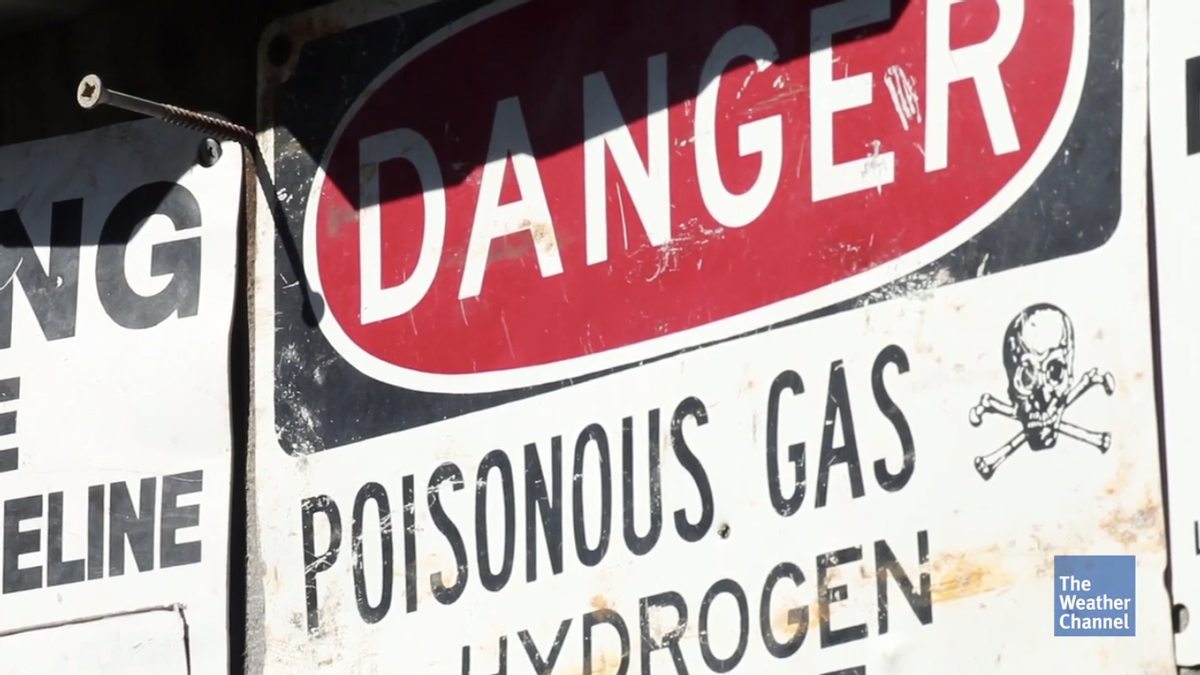The Eagle Ford Shale in South Texas is the 400-mile-long site of one of the country's biggest energy booms and, as a result of the thousands of oil and gas wells operating there, of dangerous air pollution. How dangerous? Residents complain of asthma, splitting headaches and other health concerns, all attributed to the air quality described by one family as “so bad that their lungs feel as if they will burst.”
A damning investigation released Tuesday by the Weather Channel, the Center for Public Integrity and InsideClimate News describes an oil-happy culture where those against drilling are seen as being against Texas itself, and where those seeing the devastating health effects of pollution are left to their own devices as politicians rush to defend the industry. In case you just want to know how outraged you should be, the team was kind enough to summarize their major findings:
- Texas' air monitoring system is so flawed that the state knows almost nothing about the extent of the pollution in the Eagle Ford. Only five permanent air monitors are installed in the 20,000-square-mile region, and all are at the fringes of the shale play, far from the heavy drilling areas where emissions are highest.
- Thousands of oil and gas facilities, including six of the nine production sites near the Buehrings' house, are allowed to self-audit their emissions without reporting them to the state. The Texas Commission on Environmental Quality (TCEQ), which regulates most air emissions, doesn't even know some of these facilities exist. An internal agency document acknowledges that the rule allowing this practice "[c]annot be proven to be protective."
- Companies that break the law are rarely fined. Of the 284 oil and gas industry-related complaints filed with the TCEQ by Eagle Ford residents between Jan. 1, 2010, and Nov. 19, 2013, only two resulted in fines despite 164 documented violations. The largest was just $14,250. (Pending enforcement actions could lead to six more fines.)
- The Texas Legislature has cut the TCEQ's budget by a third since the Eagle Ford boom began, from $555 million in 2008 to $372 million in 2014. At the same time, the amount allocated for air monitoring equipment dropped from $1.2 million to $579,000.
- The Eagle Ford boom is feeding an ominous trend: A 100 percent statewide increase in unplanned, toxic air releases associated with oil and gas production since 2009. Known as emission events, these releases are usually caused by human error or faulty equipment.
- Residents of the mostly rural Eagle Ford counties are at a disadvantage even in Texas, because they haven't been given air quality protections, such as more permanent monitors, provided to the wealthier, more suburban Barnett Shale region near Dallas-Fort Worth.
A documentary, released in conjunction with the report, shows just how badly residents have been failed by lawmakers:
The entire project -- feature, video, infographics, photos and even making-of story -- is well worth taking the time to explore.

Shares